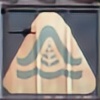HOME | DD
 classictrains — Friction
by-nc-nd
classictrains — Friction
by-nc-nd

Published: 2008-10-09 20:51:57 +0000 UTC; Views: 939; Favourites: 19; Downloads: 21
Redirect to original
Description
As you watch a train go by do you ever think about those spinning bearings on every axle? Traci does and posted a closeup a few days ago. Not so many years ago roller bearings were as rare as electronic braking is today. Instead there were bronze friction bearings contained in "boxes" like this full of grease. If the lubrication ran dry they got hot... hence the "hotbox" and the hotbox detector. If they got too hot the steel frame glowed red, the bronze melted and the whole thing came apart.Friction bearings do still exist. This one is under a caboose (equally rare) on Alaska's narrow gauge White Pass & Yukon.
Related content
Comments: 22

Friction bearings are actually banned from interchange service by the AAR. The FRA doesn't have any opinions on them IIRC.
👍: 0 ⏩: 0

Derailment caused by hotboxes = BAD.
Hotbox solution = Oil and lubrication, or ROLLER BEARINGS!
👍: 0 ⏩: 0

You mean that wasn't a hobo's camp fire?
When you think of all the things that could go wrong, it's amazing that there weren't many more rail accidents than there were back then, it's a tribute to the hard work of a lot of unsung heroes who worked the rails.
-YD
👍: 0 ⏩: 1

I think the only reason rails have survived is incredible improvements that have kept them competitive. Roller bearings everywhere. Two person crews and on and on. Truckers don't have to maintain the infrastructure they use. Rails do. Truckers will tell you otherwise pointing to the gas taxes they pay. But look at all the taxes we pay that go to bridge repair, etc. etc. and the millions that go into building them in the first place that come out of your and my pockets.
👍: 0 ⏩: 1

Not to mention the Westinghouse Air Brake that was developed right here in Western PA.
Trucking is a different animal. I admire truckers, but I think that unless they can find a different source of fuel, long haul trucking is on it's last leg.
-YD
👍: 0 ⏩: 0

I had a friction bearing fail on me about 13 or 14 years ago. Didn't catch fire but melted all the babbit off of the bearing. It wasn't glowing red, but could feel the heat, smell it and was smoking pretty good. It was also the first time I also had to use a temple stick.
I have photos someplace of another burned bearing and the journal being repacked. If I can find them I'll ask to scan them.
👍: 0 ⏩: 0

This kind of bearing seems almost prehistoric compared to today's rolling stock
👍: 0 ⏩: 0

The moment I saw this photo's title I knew I needed to come here for more education. Thanks everyone for the explanations in the comments too! I've heard of hot boxes and grass fires for sure; now I know the details.
Why is electronic braking rare today?
I did hear of one almost-deadly story involving braking on the old Northern Pacific in the Cascade Mountains of Washington State. Not sure I have the details exactly correct... heard it from ~BillNP who got it first-hand. Steam engine train stopped in the tunnel, I think due to a signal. You can't do that for long because the smoke will kill. The brakes would not release. Would not release. Would not release. An oldtimer at the back of the train realized what was happening, and put the brakes on full. And sure enough that built enough pressure that the engineer could then release the brakes and proceed out of the tunnel. It was a near thing.
👍: 0 ⏩: 2

Electronic braking is rare in the US because for it to work the whole train has to have it. There is an article in the new Trains Mag that talks about this as well as several other new trends. Presently electronic braking mostly appears in a few unit coal trains.... but use is expected to expand.
👍: 0 ⏩: 1

Okay, that does make sense now. Thank you! If the whole train has to have it, yes, unit trains would be a logical first point of adoption.
👍: 0 ⏩: 0

Electrically Controlled Pneumatic Brakes (ECP) have been tested sporadically for the last 15 to 20 years but have yet to take hold in the industry. Nobody doubts the superiority. With ECP brakes, an engineer can make real-time adjustments to the brake pressure both up and down and those adjustments will register on every car in the train at exactly the same time. With ECP brakes, the brake valve inputs travel the length of the train at the speed of light.
With conventional brakes, the engineer's brake valve adjustments travel the length of the train only at the speed of sound. This might still seem like a reasonable speed, but it ends up taking several seconds for a change in brake pipe pressure to register at the tail end of a 120-car train. The end result is that the brakes set up at the head end while the tail is still free-rolling...thus causing the slack to roll in. When a train dumps its air (emergency brake application), the slack action can be so severe that the train can derail itself.
So, back to ECP brakes and why they're rare: Several railroads have tested them on small fleets of specialty cars that run in unit trains. I understand DM&IR tested ECP's with some of their ore trains, and BNSF tested them with some coal drags. In order for ECP brakes to work, the entire train must have them. For the same reason the European railroad fleet has not switched to automatic couplers, North American railroads have not converted to ECP brakes. Every car in the fleet must be converted and every locomotive must be retrofitted with ECP brake control systems. It will cost several large fortunes and a lot of time to retrofit rolling stock and engines with ECP equipment, and many car owners balk at the idea of putting new braking equipment on cars that might be otherwise nearing the end of their useful life in the interchange fleet.
The other reason is that ECP is not the only solution. Engineers can manage the slack much more easily today with conventional brakes due to a wonderful invention called Distributed Power (DP). With DP equipment in the lead unit and in one engine on the rear of the train, an engineer can control slack almost as effectively as he can with ECP brakes. With DP, the engineer controls the engine on the tail end by remote, so all his throttle, brake valve, and other inputs get transmitted at the speed of light to the rear engine consist and parroted immediately. If he needs to, the engineer can "split the screen" (referring to the DP computer screen on the console) and have the rear locomotive run at slightly different settings than the head end to stretch the slack or bunch the slack as the engineer sees fit. DP needs be only on one locomotive in each engine consist, as the rest of the engines coupled to it will follow directions through the MU cables and pipes.
The current effort is to convert one fleet at a time...so the latest trains to get ECP brakes are unit coal trains. Other cars that run in unit trains will get them sooner than later, including ethanol tankers, grain shuttles, and the like. It'll be a long time before we see regular box cars getting converted. Well, I think I've written enough here...
👍: 0 ⏩: 1

air travels through the train at about 550 feet per second.
👍: 0 ⏩: 0

I remember grass fires being started by hotboxes. A train would roll by and then the fire department would be called out...
👍: 0 ⏩: 0

Actually what caught fire was the wick that was inside the box. There was a cotton wick that ran from the bearing face to the bottom of the housing where the oil was at. Every few hundred miles or so a carman would have to walk the track lift the lids and add oil to each one of these things.
If it ran dry, the cotton wick would get hot and naturally catch fire, henceforth the term hotbox.
The only things that was inside other than that was a machined piece of metal, usually brass that sat on top of the axle itself. The roller bearing of today eliminated the oilers and use a higher hardness of steel in the bearings themselves. The whole package is filled with grease and sealed then bolted onto the car.
👍: 0 ⏩: 1

Thanks for the details. Now you all have me thinking... There actually were mechanized devices that would lift the lid and squirt oil in as a train moved slowly passed.... often at the top of a hump. They really only worked well if all the wheels were the same size... which in the days of the 40 foot boxcar was pretty common.
Notice this one has some kind of wick extending out the top.
👍: 0 ⏩: 1

Looked like a block of wood to me but couldn't be sure given the angle.
That was all fine and dandy, as long as the cars stayed 40 foot long.
They didn't
👍: 0 ⏩: 0

i saw the one that the other person posted... it looked firmilliar but it had like magnetic brakes right on the outside of it so i was thinking ... then i see yours ... and im like wow it looks like a brand new train!
sorry if i am weird..
👍: 0 ⏩: 0

After getting hot enough, most will even catch fire.
👍: 0 ⏩: 1

I forgot about that but you are right. The one I remember is the night I was watching a NorthWestern freight roll-by and I saw the red glow of a hot steel sideframe going by.
👍: 0 ⏩: 0

Thanks Mark. I keep seeing other people's comments and thinking of shot I should (or did) take.
👍: 0 ⏩: 0






















